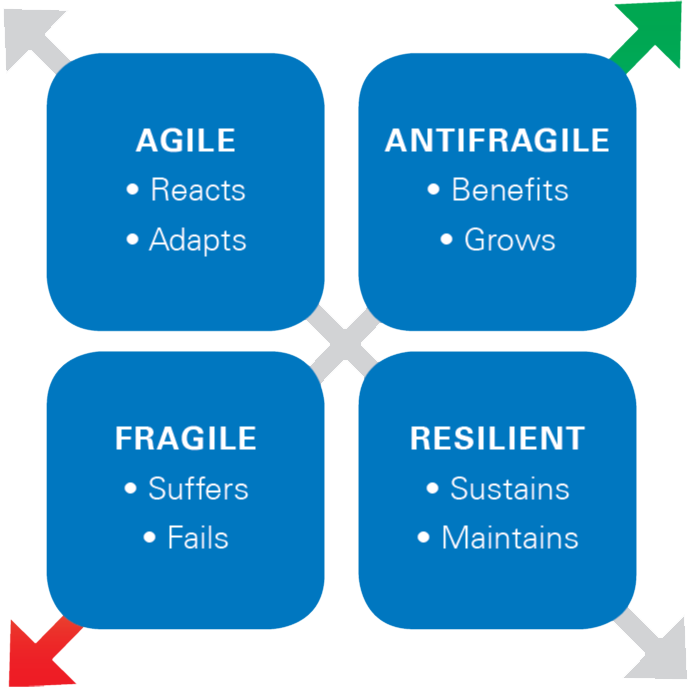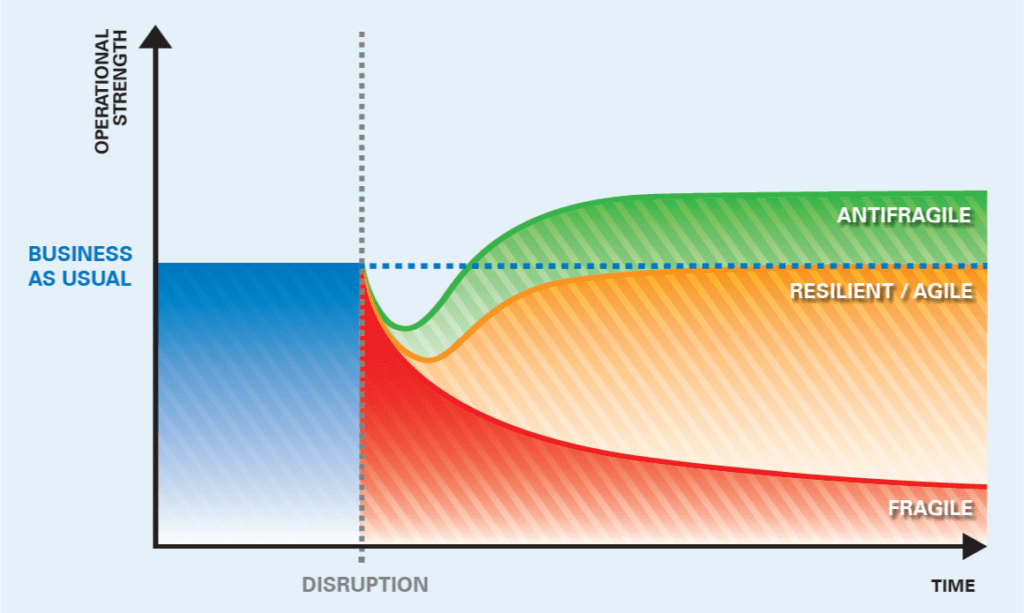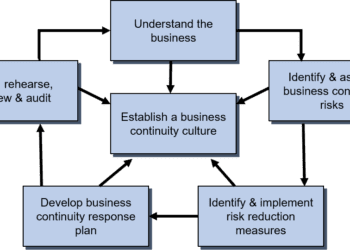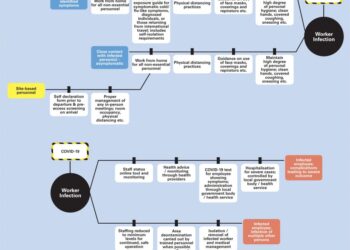Harnessing Chaos – The antifragile approach to Business Continuity Management
Resilient businesses are able to recover effectively from disruption. When the business is also agile it can recover quickly. But what if the business actually harnesses the uncertainty created by the disruption and grows stronger as a result? This is the defining characteristic of the ‘antifragile’ business model.

Image by Nareign, licensed under Creative Commons
When dark clouds form, search for the silver linings
THE EVOLUTION AND REVOLUTION OF BUSINESS AS USUAL
We live in a chaotic world, and the realm of business is no exception. Every organisation faces unexpected fluctuations in business conditions from time to time. These deviations from ‘business as usual’ are often outside an organisation’s influence, and can emerge slowly and apparently (e.g. market trends), or strike at random with little warning (e.g. natural disasters or epidemics).
The fact is that businesses, by necessity, must adapt if they wish to survive; either by continual evolution to gradual change, or by immediate revolution when the unexpected occurs.
Succumbing to the hidden forces of entropy which bid constantly to derail business plans is plainly not an attractive option. So business leaders turn to the practices of Business Continuity Management (BCM) to offer a route map towards building resilience to disruptions.
Resilience in this context means that business risks are eliminated or mitigated to a low level; that there is a built-in tolerance to disruptions, and that the business is able to recover. But there is an important facet of resilience in BCM which is often overlooked – agility.
AGILITY: A KEY INGREDIENT IN THE RECIPE FOR SURVIVAL
By agility we mean that the business is quick to mobilise and respond, and flexible enough to adapt, and does this decisively with high conviction. The ability to rapidly understand and react to an evolving scenario sets up a business to minimise both the magnitude and the duration of the disruption. Moreover, a truly agile response can enable a business to extract value out of the disarray.
Inspiration can be drawn from General Sun Tzu’s 5th century BC treatise on military strategy and tactics “The Art of War” (Ref. 1), in which he submits that “in the midst of chaos, there is also opportunity”. Whilst the modern commercial environment may at first seem worlds apart from ancient Chinese warfare, BCM leaders today can still take motivation from Sun Tzu’s fundamental messages on tactical operations and management strategy.
Take the COVID-19 pandemic for example. It has forced companies to adapt to change and redesign their products or services – or even create new ones – to respond to the developing demands of millions of people around the world. While some businesses shut down or suspended their activities, others forged opportunities from the pandemic through transformation and innovation – the ‘pandemic pivot’.
Restaurants moved towards takeout, delivery and catering rather than an eat-in service. Textile and apparel manufacturers switched to producing face masks. Fast-moving consumer goods companies transferred focus from products where demand had fallen (like skincare) towards surface cleaners and personal hygiene products. Breweries even repurposed distilling equipment to produce hand sanitiser.
These are all examples of businesses which, despite the disruptions and impending hardship, have been agile enough to pivot in new directions conducive to survival.
BEYOND RESILIENCE AND AGILITY
Nassim Nicholas Taleb coined the term ‘antifragile’ as an alternative to resilience (Ref. 2). He argues that if fragility is the quality of being damaged by stressors, then resilience cannot be the opposite of fragility. Resilience is more geared towards a neutral outcome, whereas to be truly antifragile the result must be a positive one. Although resilient businesses have an ability to resist shocks and remain unchanged, antifragile businesses are able to leverage an unpredictable environment and actually grow stronger from the knocks they receive (see Figure 1).

Figure 1 – Beyond resilience and agility, towards antifragility
Antifragility is a nice notion, but how can it be translated into practice through BCM? In short, antifragility must be implemented throughout the business via a BCM approach which includes:
- Strategies that recognise potential upside as well as downside
- Risk and impact analyses that identify and categorise opportunities arising from disruptions
- Implementation of business continuity measures geared towards agility
- Business continuity plans which ramp up quickly from ‘survive mode’ to ‘thrive mode’
- Embedding a business continuity culture which accelerates decision making and innovates at pace
Simply having a business continuity plan which promotes antifragile responses is not sufficient. The value of business continuity planning lies not in the plan itself, but in the organisational capabilities developed through the planning process. Only when an antifragile approach is baked into the BCM process, can it create a collective mindset which is embedded throughout the organisation.
An antifragile business culture decentralises control and empowers individual business units and employees with the autonomy to embrace risk, innovate, and – crucially – to make mistakes and learn from them. An antifragile approach actually requires failures in the short term in order for it to succeed in the long term (see Figure 2). As long as failures are on a manageable scale, acting on feedback is what enables the business to learn lessons, fortifying it for the future.

Figure 2 – Antifragile businesses benefit from disruptions
TO THE VICTOR BELONG THE SPOILS
Antifragile businesses will be the first movers into new arenas, and will gain a competitive advantage by being the first to market. Being first enables the business to establish strong brand recognition and customer loyalty before competitors enter the fray, some of which may whither and fold in an analogous way to natural selection.
Consider, also, that disruptions naturally trigger customers to seek alternatives for currently unavailable products and services. If the alternatives prove more convenient, the customers may never return. So the antifragile approach yields twin benefits – securing the existing customer base through innovation, as well as capturing market share from competitors.
CONTINUOUS RECALIBRATION
All adaptations or transformations of a business’s operating model come with changes to that business’s risk landscape. BCM – and enterprise risk management in general – therefore needs to evolve in step with the business to ensure that emerging risks are identified and managed. This makes the continuous review and improvement step of the BCM system all the more important for agile businesses.
CONCLUSION
Change is inevitable, and business leaders can’t afford to treat BCM as an afterthought. A reliance on organisational resilience may suffice for shortterm interruptions, but to thrive following major disruptions requires an antifragile mindset which is most effectively implemented through BCM.
This article first appeared in RISKworld Issue 38
References:
- The Art of War, Sun Tzu, circa -500 BC
- Antifragile: Things That Gain from Disorder, Nassim Nicholas Taleb, 2012







